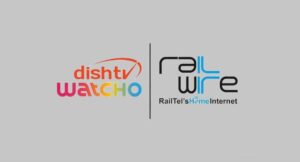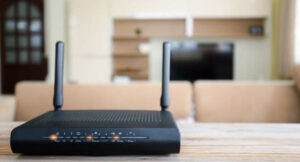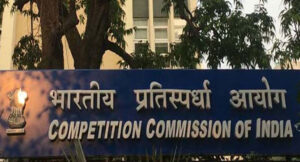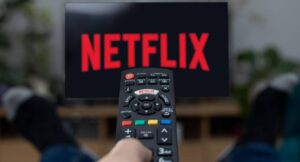Ofcom has published its final Statement of Principles and Methods for designating television selection services under the Media Act 2024 on 23 April 2025. The statement, unchanged from the December 2024 consultation version, will guide Ofcom’s recommendations to the Secretary of State on which connected TV platforms should ensure prominence and availability of public service broadcasters’ content. The regulator received responses from major stakeholders including the British Broadcasting Corporation, ITV, and Sky, and plans to consult on its first designation recommendations in summer 2025. The new regime requires designated platforms to make public service broadcaster content easily accessible and prominent. LexisNexis
Category: Broadcast
-

Highlights of the Day: OTT+internet bundles will be offered by DipTV Watcho & RailWire
In a move set to redefine digital entertainment for regional markets, DishTV Watcho, the OTT aggregation platform, has announced a strategic partnership with RailWire, the internet broadband service from RailTel. This collaboration will roll out in West Bengal, bringing together high-speed internet and a curated bouquet of OTT entertainment apps in a single, seamless package. With plans to expand to other parts of the country in subsequent phases, the partnership signals the beginning of a broader shift toward integrated digital internet & entertainment solutions in India.
The bundled offering is tailored specifically for West Bengal audiences, keeping regional preferences at the core. By bringing together Railwire’s trusted broadband connectivity with DishTV Watcho’s growing OTT library—including both regional and national favourites—users get a single-subscription solution that eliminates the hassle of managing multiple providers, apps, and payment cycles. The result is a more convenient, immersive, and affordable digital entertainment experience.
Customers can select from three broadband-plus-OTT bundles designed to meet different household needs and budgets. The RW Bangla Entry Pack offers 25 Mbps speed with 1.5 TB of data, the RW Bangla Super Pack provides 50 Mbps with 2 TB, and the RW Bangla Premium Pack delivers 100 Mbps with 2.5 TB. All plans come bundled with access to 13+ popular OTT platforms, including Hoichoi, ShemarooMe, Sanskar, FanCode, Discovery+, Hungama, Watcho Exclusives, and more starting at just ₹349+taxes.
Commenting on the partnership, Manoj Dobhal, CEO and Executive Director of Dish TV India Ltd., said, “At Dish TV and Watcho, we are committed to delivering innovations that add real value to our customers’ lives. This partnership with RailTel brings together two trusted brands to offer a hassle-free, all-in-one entertainment solution that is both affordable and locally relevant. We are excited to launch this in West Bengal and are confident it will resonate deeply with consumers seeking simplicity, reliability, and quality in their digital experience”.
RailTel’s Director NPM Yashpal Singh Tomar added, “We are delighted to join hands with Watcho in bringing this bundled proposition to life. RailWire has always stood for dependable connectivity, and this tie-up allows us to elevate the digital journey of our users by offering them not just internet access, but a complete entertainment ecosystem. This initiative is aligned with our vision of bridging the digital divide and enriching lives, especially in emerging regional markets”.
RailTel operates on a robust optic fiber backbone spanning over 62,000 Route kilometers along Railway track and 21000 Km citywide, connecting communities across India through a network of over 11,000 local partners. This collaboration marks another milestone in Watcho’s mission to extend its reach by aligning with infrastructure partners like RailTel to create accessible, future-ready content consumption models.
By offering a unified digital solution with a strong regional focus, Watcho and RailWire are poised to transform how Indian audiences particularly those in Tier 2 and Tier 3 cities experience home entertainment. Made in Media
-

The digital divide is widening even if US broadband speeds are rising
Many U.S. states made sizable gains in their broadband infrastructure during 2024 and much of that growth was fueled by private equity financing, mergers and acquisitions, capex investments, and government funding.
According to Ookla Speedtest Intelligence® data, the number of states in the U.S. delivering the minimum standard for fixed broadband speeds as designated by the Federal Communications Commissions (FCC) of 100 Mbps downstream and 20 Mbps upstream is growing. In fact, in our latest U.S. State Broadband Report, we found that states with 60% or more of Speedtest users receiving 100/20 Mbps dramatically increased between the first half and the second half of 2024.
However, that increase didn’t result in sweeping improvements to the digital divide. Instead, 32 states saw their gap between the percentage of urban users and rural users that receive the minimum required broadband speeds grow during this time period. Ookla uses the Census Bureau’s urban-rural classification to determine which users are urban vs. rural.
New Jersey is No. 1
Seven states now have 65% or more of Speedtest users experiencing the FCC’s minimum standard for broadband of 100/20 Mbps. New Jersey is No. 1 with 68.97% of Speedtest users experiencing the FCC’s minimum requirement followed closely by Connecticut with 68.35%. Delaware moved up from the No. 5 slot in the first half of the year to the No. 3 ranking in the second half of 2024.On the opposite end of the spectrum, Montana and Alaska have fewer than 40% of Speedtest users that receive the minimum broadband speeds of 100/20 Mbps so it’s no surprise that Montana and Alaska are also two of the least densely populated states in the country.
Digital Divide Grows
While the number of states with 60% or more of users experiencing 100/20 Mbps more than doubled from the first half of 2024 to the second half of 2024, it appears that much of that progress occurred in urban areas because the digital divide, which is the gap between urban and rural users in a state, became much more prominent in 32 states during that time period.Washington state leads the nation with the biggest digital divide in the second half of 2024 and it was also at the top of the list in the first half of the year. Oregon and Illinois are also top states with the biggest digital divide in the second half of the year.
The lack of affordable broadband is known to exacerbate the digital divide and some of this increase in the digital divide is likely due to the demise of the Affordable Connectivity Plan (ACP), which provided discounted broadband services to more than 23 million low-income U.S. households. The FCC ended the ACP program on June 1, 2024, because of a lack of Congressional funding. Ookla
-

Trump cuts down govt-funded news broadcasts, yet a US judge stop it
A federal judge ordered the Trump administration on Tuesday to halt efforts to shut down Voice of America, Radio Free Asia and Middle East Broadcasting Networks, whose news broadcasts are funded by the government to export U.S. values to the world.
U.S. District Judge Royce Lamberth, who is overseeing six lawsuits from employees and contractors affected by the shutdown of U.S. Agency for Global Media, ordered the administration to “take all necessary steps” to restore employees and contractors to their positions and resume radio, television and online news broadcasts.
USAGM placed over 1,000 employees on leave and told 600 contractors they would be terminated after the agency abruptly shut down the broadcasts in March.
The ruling was a “significant victory for press freedom,” said Andrew Celli, an attorney representing VOA employees in the lawsuits.
USAGM did not immediately respond to a request for comment.
VOA was founded to combat Nazi propaganda at the height of World War Two, and has become a major international media broadcaster.
Congress has funded and authorized the broadcasts to provide an “accurate, objective, and comprehensive” source of news in other nations and export the “cardinal American values of free speech, freedom of the press, and open debate,” Lamberth wrote. Congress made the broadcasts mandatory and did not allow the executive branch to unilaterally terminate or defund them, he ruled.
Trump advisor Kari Lake announced the shutdown on March 15, placing nearly all USAGM employees on leave, saying the agency was “irretrievably broken” and biased against U.S. President Donald Trump.
Lamberth rejected USAGM’s arguments in court that it had not made a “final decision” on the future of the broadcasts and that the lawsuits should be handled has a series of “employment disputes” with terminated workers.
“It strains credulity to conclude the USAGM is ‘still standing’ when its 80-year-old flagship news service, VOA, has gone completely dark with no signs of returning,” Lamberth wrote.
Lamberth heard arguments from lawyers for VOA employees and the Trump administration on Thursday. He asked several questions probing Trump’s statements indicating that VOA’s news coverage was too critical of America and personally of him.
“I thought that one of the strengths of Voice of America was that it had the nerve to tell the truth about America,” Lamberth said. Lamberth also pointed out that Trump had signed stopgap government funding measure last month that appropriated funds for USAGM. Trump had not vetoed the spending bill or asked Congress to rescind that funding, Lamberth said.
As a group, USAGM had about 3,500 employers and an $886 million budget in 2024, according to its latest report to Congress. Reuters
-

The second satellite docking via Spadex is successfully completed by ISRO
The Indian Space Research Organisation (ISRO) has successfully performed the second docking of satellites as part of its Spadex missions, Union Minister Jitendra Singh said.
He said more experiments are planned in the next two weeks.
‘Glad to inform that the second docking of satellites has been accomplished successfully,’ Singh, the minister of state for science and technology, atomic energy and space, said in a post on ‘X’.
He recalled that the PSLV-C60/Space Docking Experiment (SPADEX) mission was launched on December 30, 2024.
Thereafter satellites were successfully docked for the first time on January 16 and successfully undocked on March 13, the minister said.
‘Further experiments are planned in the next two weeks,’ Singh added.
Later, in a statement, ISRO said the docking experiment of the SPADEX satellites (SDX-01 and SDX-02) for the second time was successfully carried out on April 20 at 08.20 pm.
‘Subsequently, power transfer from SDX-02 to SDX-01 satellite as well as vice versa was also exercised and accomplished on April 21. The experiment involved operating a heater element in one of the satellites through power from the other satellite,’ it said.
The space agency said the duration of power transfer was approximately four minutes and the performance of the satellites was as expected.
‘In the second attempt, docking was completed with full autonomy from an inter-satellite distance of 15 metres till docking. In the first docking attempt, an additional hold point was manually exercised at an inter-satellite distance of 3 metres,’ the statement read.
The second docking experiment was preceded by detailed ground simulations and on-orbit trials incorporating the experience gained from the first docking and undocking experiments, thereby providing immense confidence for the second docking demonstration, it said.
‘The demonstration of the fully autonomous second docking along with power transfer marks the completion of an important milestone in the SPADEX mission,’ the space agency added.
According to ISRO, the SpaDeX mission is a cost-effective technology demonstrator mission for in-space docking using two small spacecraft that were launched by PSLV.
In space, docking is essential when multiple rocket launches are required to achieve common mission objectives.
This experiment is crucial for ISRO’s future missions, such as the Bharatiya Antariksh Station and the landing of an astronaut on the Moon. PTI
-

Hathway Cable’s Q4 FY25 profit climbed significantly to ₹34.8 crore
Hathway Cable & Datacom Ltd, provider of cable and internet services, on Tuesday reported a marginal increase in consolidated net profit at Rs 34.8 crore for the fourth quarter ended March 2025. The company had posted a net profit of Rs 34.57 crore in the January-March period a year ago, according to a regulatory filing from Hathway Cable, a firm owned by Reliance Industries Group.
Revenue from operations was up at Rs 513.15 crore from Rs 493.37 crore a year ago.
Hathway’s revenue from its cable TV business was at Rs 346.09 crore and Rs 149.35 crore from broadband services in Q4 FY25.
Total income, which also includes other income, was up 2.43% to Rs 546.6 crore in the March quarter.
Total expenses were up 3.36% to Rs 510.15 crore.
However, the net profit in FY25 was down 6.8% to Rs 92.54 crore from Rs 99.29 crore a year ago. Total income during the year was up 1.3% to Rs 2,146.35 crore.
Meanwhile, in a separate filing, Hathway informed it has amalgamated five step-down wholly-owned subsidiaries – Hathway Kokan Crystal Cable Network, Hathway Bhaskar CCN Multi Entertainment, Hathway Cable MCN Nanded, Channels India Network and Elite Cable Network – with Hathway Digital Limited (HDL).
HDL is a wholly-owned subsidiary and the amalgamation is effective from April 22, 2025.
Shares of Hathway Cable & Datacom Ltd on Tuesday settled at Rs 14.54 apiece on BSE, up 2.97% from the previous close. PTI
-

In Q4, Jio could offset RIL O2C’s drop
Reliance Industries Ltd (RIL) is expected to report tepid earnings for the quarter ended March 31 2025 (Q4FY25), according to analysts, with steady growth in its telecom and retail arms likely to be offset by softness in the oil-to-chemicals (O2C) segment.
The country’s most valuable company is scheduled to announce its Q4FY25 results on April 25.
According to a Bloomberg poll, 16 analysts estimated consolidated revenues of ₹2.42 trillion (up 2.5 per cent year-on-year or YoY) and 10 forecast a net adjusted income of ₹18,517 crore (down 2.5 per cent YoY) for Q4FY25.
The diversified conglomerate has three main business divisions — oil-to-chemicals (O2C), which includes refining, fuel-retailing, and petrochemicals; and two consumer-facing businesses, namely retail and telecom. Besides, there is oil and gas exploration.
Analysts at JP Morgan said in the April 7 report: “We expect RIL to report flattish earnings QoQ (c.₹184 bn): a) O2C earnings can be hurt by the decline in diesel cracks/polyester margins, but can benefit from the (temporary) rupee depreciation during the quarter.”
The research house expects earnings before interest, tax, depreciation and amortisation (Ebitda) in telecom to grow by an estimated 15 per cent Y-o-Y, driven by tariff increases earlier in the financial year, while building in 12 per cent Y-o-Y growth in Ebitda in the retail business and stating that retail is the most difficult to anticipate due to recent volatility.
According to analysts at JP Morgan, the consolidated Ebitda for the Mukesh Ambani-run conglomerate is expected to grow 2 per cent Y-o-Y to ₹43,409 crore. It estimates net profit at ₹18,376 crore, a 3 per cent YoY decline in Q4.
On the other hand, Dolat Capital estimates RIL’s Ebitda to decline by 0.9 per cent Y-o-Y to ₹42,144 crore while profit after tax (PAT) may fall 8.4 per cent to ₹17,359 crore.
A key overhang for RIL remains the performance of the O2C segment, in which the margins are likely to be pressured due to rising feedstock prices, particularly a 28 per cent quarter-on-quarter (QoQ) jump in ethane prices and declining or flat prices of petrochemicals.
In contrast, Reliance Jio and the retail business are poised to deliver stable performance.
Digital services are expected to post a 17 per cent YoY rise in Ebitda, driven by the full impact of the July 2024 tariff hike, said Kotak Institutional Equities in a note dated April 6.
Reliance Retail is projected to ring in a mid-teens revenue increase with Ebitda growth of about 8 per cent Y-o-Y, stated Dolat Capital.
Goldman Sachs wrote: “We expect RIL’s Q4 core Ebitda to remain largely flat Q-o-Q, but market focus into the quarterly print will likely be more on retail segment growth trends and residual tariff hike driven growth in Jio revenue.”
JP Morgan analysts, led by its head of research, Sanjay Mookim, wrote: “Outcomes at Retail are likely to be the most significant stock driver on results. Growth, say 15 per cent or more, can be a positive surprise. Mid-single-digit outcomes can hurt stocks. A material decline in quarterly capex can also help.”
Analysts at Goldman Sachs expect resumption in earnings momentum in FY26, driven by growth in all segments.
Analysts at Yes Securities in an April note said refining throughput was to increase 3.5 per cent YoY but decrease 1.1 per cent Q-o-Q to 17.7 million tonnes. The gross refining margin was expected at $10.4 per barrel, telecom ARPU (average revenue per user) was to increase to ₹208 and Retail revenue was to grow 7.4 per cent Y-o-Y but decline 8.9 per cent sequentially to ₹82,350 crore with the Ebitda margin at 7.5 per cent. Business Standard
-

Qube Cinema and UFO Moviez are hit by CCI
The Competition Commission of India (CCI) has imposed a penalty of Rs 1.04 crore on UFO Moviez India and its subsidiary Scrabble Digital and Rs 1.66 crore on Qube Cinema Technologies for indulging in anti-competitive conduct.
The matter pertains to the tussle between theatre owners and companies like UFO Moviez and Qube which supply digital cinema equipment on rent.
In an order, CCI said UFO Moviez and Qube imposed restrictions on the supply of content in their lease agreements with theatre owners which created barriers for players engaged in the post-production processing services. In addition, these companies blocked cinema theatre owners (CTOs) with digital cinema initiatives-compliant digital cinema equipment from being served by any other player.
The CCI has also directed UFO Moviez and Qube to not re-enter lease agreements with the CTOs imposing restrictions on supply of content from other parties. Further, the antitrust regulator has held that the existing lease agreements with CTOs shall stand modified such that they do not impose restrictions on supply of content from parties other than UFO Moviez (and its affiliates) and Qube. The erring parties have been asked to deposit the penalty amount within 60 days. Financial Express
-

Private cloud services will reach $385.7B globally by 2029
The global private cloud services market size is estimated to grow by USD 385.7 billion from 2025-2029, according to Technavio.
Private cloud services have gained significant traction in the business world due to their ability to offer dedicated computing resources with enhanced data security and compliance with regulatory standards. IT infrastructure for SMEs and large enterprises in sectors like IT & Telecommunication, Healthcare, Media and Entertainment can benefit from private cloud solutions. Legacy systems and interoperability concerns are addressed through virtualization and cloud integration. Cost efficiency and scalability are key drivers for cloud adoption. HIPAA-compliant solutions cater to healthcare industry needs. Cloud migration, managed services, and hybrid cloud offerings provide flexibility for businesses. Cloud storage, computing, and management solutions ensure business continuity and disaster recovery. Cloud automation, security, and infrastructure management streamline operations. Cloud innovation continues with advancements in cloud applications, deployment, and architecture. Cloud providers offer customized solutions to meet diverse business requirements. Cloud performance and solution integration are essential for seamless operations.
Financial institutions are increasingly adopting private cloud solutions to enhance their agility and reduce costs. Private Platform-as-a-Service (PaaS) enables the development, testing, and deployment of applications on secure cloud platforms. Data security and regulatory compliance are key concerns for financial institutions, making private clouds an attractive option. By investing in private cloud infrastructure, financial organizations can lower their capital expenditures and focus on business transformation initiatives. Digital transformation is a top priority, and private cloud services facilitate this by providing a secure and flexible environment for data processing and application development. In recent years, many financial institutions have made significant investments in private cloud infrastructure to protect their data and stay compliant with regulatory requirements. Technavio
-

Netflix offers trust with an upbeat revenue estimate
Netflix executives on Thursday backed the company’s revenue outlook for the year and voiced confidence that the streaming service would weather any economic turbulence from President Donald Trump’s erratic tariff plans. Following an earnings report that topped analyst expectations, Netflix co-CEO Greg Peters said the company had not seen any significant shifts in customer behavior, commentary that is likely to ease Wall Street concerns that Trump’s policies would prompt lately frugal consumers to reconsider spending on streaming services.
Netflix shares rose 2.7% in after-hours trading. The stock has risen 9% so far this year, compared with a 10% slump in the broader S&P 500 index.
With more than 300 million global customers, Netflix has continued to sign up subscribers in markets around the world as consumers flocked to its lower-priced, ad-supported tier since its launch in late 2022.
Peters noted that the entertainment sector, and Netflix specifically, had proven resilient during previous downturns in the economy. “We really do expect the demand to remain strong,” he said.
He added that the company’s lower-cost options also should help. The ad-supported tier accounted for 55% of new sign-ups in countries where it is available, the company has said.
The streaming giant also said its co-founder, Reed Hastings, had left his post as executive chairman to become the board’s non-executive chair, “part of the natural evolution of our leadership structure and succession planning.”
Netflix co-CEO Ted Sarandos said the company remained focused “on the things we can control, and improving the value of Netflix is a big one.”
“In difficult economies, home entertainment value is really important to consumer households,” Sarandos said, “and Netflix is a tremendous value in absolute terms and certainly in competitive terms.”
The company projected its revenue would rise to $11.04 billion for April through June, above the analyst consensus of $10.90 billion.
For the year, Netflix reaffirmed its forecast of revenue between $43.5 billion and $44.5 billion, “which assumes healthy member growth, higher subscription pricing and a rough doubling of our ad revenue.”
For the first quarter, Netflix reported revenue of $10.54 billion, edging past analysts’ estimates of $10.52 billion, according to data compiled by LSEG.
Per-share earnings of $6.61 exceeded consensus estimates of $5.71. The company released hits such as the limited series “Adolescence”, drama thriller “Zero Day” and the unscripted series “Temptation Island” during the quarter.
Netflix said revenue and operating income beat its own guidance “due to slightly higher subscription and ad revenue and the timing of expenses.” It said advertising revenue was “still very small relative to subscription revenue.”
PP Foresight analyst Paolo Pescatore said he believed Netflix was in a strong position to handle a recession.
“Netflix is an indispensable service in users’ lives. It will be the last subscription that users will cancel given the broad and breadth of programming,” Pescatore said. Reuters
